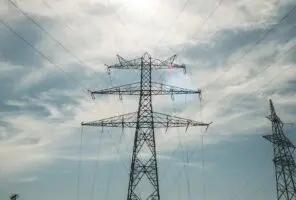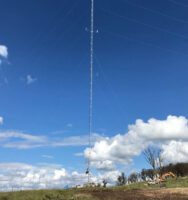Researchers from the California Institute of Technology say they have successfully beamed solar power from space to Earth, offering the first hope of sourcing a virtually limitless source of renewable energy.
Using one of three technologies onboard the Space Solar Power Demonstrator (SSPD-1) which was launched into space in January, the team from Caltech were able to wirelessly transmit power to Earth.
The team says the breakthrough opens the door to an energy source that could “potentially [yield] eight times more power than solar panels at any location on Earth’s surface.”
The wireless power transfer was demonstrated by MAPLE, short for Microwave Array for Power-transfer Low-orbit Experiment, which was developed by a Caltech team led by Ali Hajimiri, Bren Professor of Electrical Engineering and Medical Engineering and co-director of Caltech’s Space Solar Power Project (SSPP).

MAPLE consists of an array of flexible lightweight microwave power transmitters which are driven by custom electronic chips built using low-cost silicon technologies. Using its array of transmitters, MAPLE is able to beam energy to specific locations on Earth.
MAPLE also demonstrates the fundamental principles for space-based solar generation to be successful – arrays which are lightweight so as to minimise the amount of fuel needed to send them into space, and which are also flexible enough to be packaged onto a rocket, while using low-cost technologies.
“Through the experiments we have run so far, we received confirmation that MAPLE can transmit power successfully to receivers in space,” said Hajimiri.
“We have also been able to program the array to direct its energy toward Earth, which we detected here at Caltech. We had, of course, tested it on Earth, but now we know that it can survive the trip to space and operate there.
“To the best of our knowledge, no one has ever demonstrated wireless energy transfer in space even with expensive rigid structures. We are doing it with flexible lightweight structures and with our own integrated circuits.
“This is a first.”
The two separate receiver arrays are able to receive the solar energy and convert it to direct current (DC) electricity, before the transmitters on MAPLE are able to direct the energy to a desired location – in this case, a receiver on the roof of the Gordon and Betty Moore Laboratory of Engineering on Caltech’s campus in Pasadena.
In addition to surviving the rigors of a rocket launch and space flight, MAPLE is not sealed and is therefore subject to the harsh environments of space, including the massive swings in temperature and solar radiation which will one day be faced by a large-scale SSPP unit.










